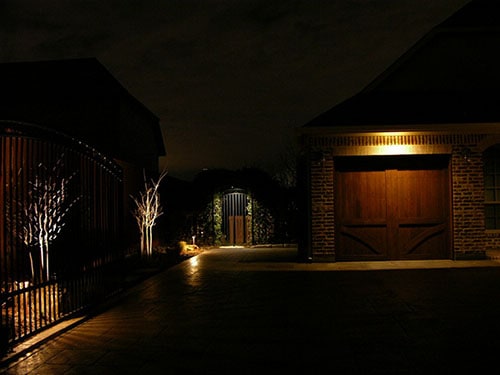
If you are looking to beef up the security around your home without sacrificing the beauty and comfort of your outdoor space, the most effective option is outdoor security lighting. The right security lighting can help deter crime, keep your guests safe by helping them see potential tripping hazards on your property, and spread a beautiful bright light around your landscape.
Installing security lighting around your home is a worthwhile investment. As with any investment, it’s always a good idea to properly research your options. By understanding the many different types of security lighting options available, along with some of the inherent pros and cons of each, you can decide on the right type for your property.
Solar or Halogen Floodlighting
When many people think of security lighting, they tend to think of floodlighting. Specifically, floodlighting refers to lights designed to illuminate large spaces around your home. These types of lights are generally installed in areas where security lighting is a top concern, such as near garage doors and other exterior entryways.
There are several different types of floodlights, including traditional halogen, solar lights, and LED lights. Here is what you can expect from these options:
Solar-powered floodlights are powered by solar energy through a solar panel and a battery. During the daytime, the solar panel charges the battery, providing the energy for the light to come on during the night. While solar flood lights help reduce energy costs, they are not as bright as LED or halogen floodlighting.
Halogen floodlights are extremely bright, making them super-effective at chasing away shadows.These lights work well in combination with a motion sensor, as they can catch intruders off-guard, blinding them and making them nervous. Oftentimes, this slight scare is enough to make them think twice about approaching your home. However, there are a few things to keep in mind. Halogen lights emit heat and are prone to damage from impact or overheating. This results in a relatively short lifespan.
LED floodlights (Creative Nightscapes Recommended) are unparalleledwhen it comes to combining energy-efficiency, durability, and brightness. While they are not as energy-efficient as solar lights, they significantly reduce energy consumption when compared to halogen lights. They also still give a crisp bright light to scare off intruders. These lights do not give off heat, making them safer than halogen lights, and they are incredibly hardy, with an impressive lifespan of up to 40,000 hours.
High-Intensity Discharge (HID) Lighting
For those who are looking for extremely bright security lighting, high-intensity discharge (HID) lighting may be the right option. This specific type of outdoor lighting is used in commercial parking lots and around other larger structures. In recent years, more homeowners have been installing this type of lighting on their residential properties.
What sets HID lighting apart from other security lighting options is the strength and intensity of the light itself; it simply cannot be matched by other lighting types. This is usually the best option for larger plots of land where a traditional floodlight may not provide enough coverage. Before installing HID lighting, however, it’s a good idea to check with your homeowners’ association if you have one, as there may be restrictions in place against this type of lighting.
Motion-Activated Lighting
If you’re looking for a security lighting option that will provide you with the coverage you need without running up your energy bill or using unnecessary electricity, motion-activated lighting may be the right choice for you. This type of lighting is extremely common on residential properties. Motion-activated lighting fixtures are equipped with a small sensor that will trigger the light to turn on only if motion is detected within a certain radius of the light itself. This means that these security lights will only illuminate the area if somebody sets foot on your property or gets too close to your home.
Since the lights are only on when needed, motion-activated lights are one of the most cost-effective and energy-efficient lights on the market.
Timed Exterior Lighting
An alternative to motion-activated security lighting is timed exterior lighting. This type of lighting is set on a schedule that you determine. The lights only come on when you decide it is beneficial for them to be on. Being able to schedule the lights means they can turn on after your family is already asleep, ensuring that bright lights aren’t keeping them from going to bed. This method helps save money on energy bills and gives you more control over your outdoor lighting.
Homeowners should keep in mind that timed exterior lighting tends to be dimmer than traditional floodlighting, but they’re still a good option for general security and protection.
Most Effective Lighting Techniques to Deter Crime
While having outdoor lighting can help deter crime, there are some additional steps you can take to reduce the chances of your home being targeted. It is important to remember that intruders and burglars target your home when they think no one is home. Using lighting to mimic activity within or around your home is the most effective way to keep crime at bay.
- Use indoor lights to mimic home activity when you are not around. This is effective during the daytime, especially in the evenings.
- Motion-sensor lighting can catch burglars off guard. Bright lights can scare would-be intruders and alert you and your neighbors that suspicious activity is happening.
- Use floodlights and downlighting to keep shadows away from hard-to-see places, such as near the sides of your house.
Choosing the Right Security Lighting for Your Home
Wondering how to best protect your home with the right type of security lighting? The team at Creative Nightscapes can help! Our design team can help you understand the best fit that combines security and functionality while still capturing your home and landscape in brilliance. Contact our team today for more information or to schedule a consultation with our design team.
